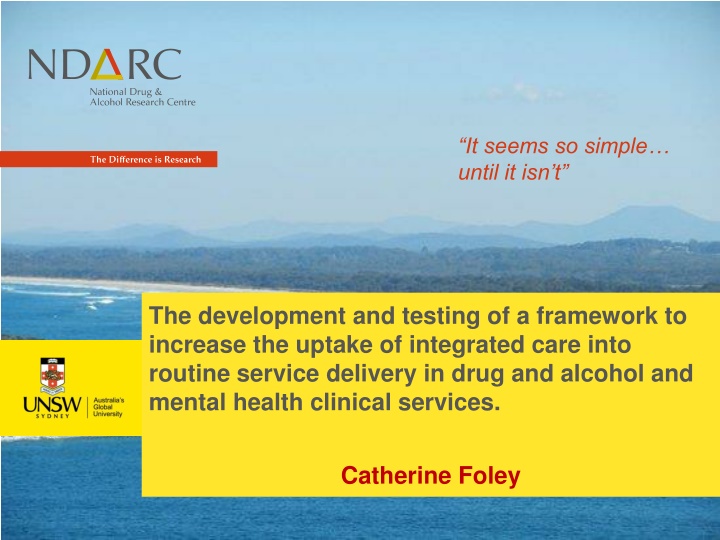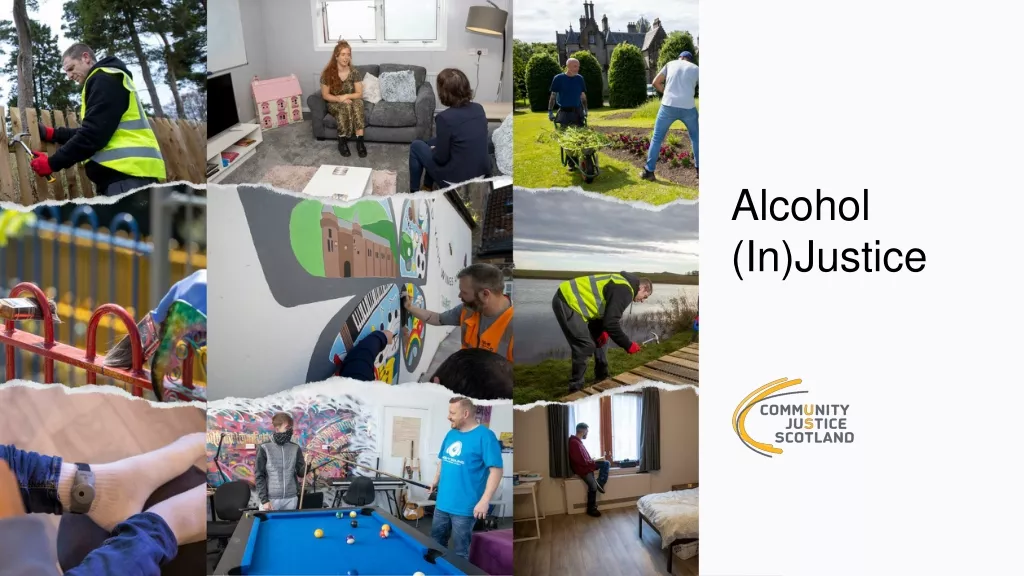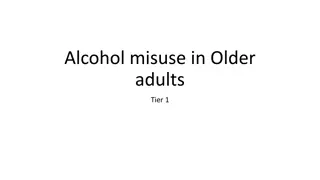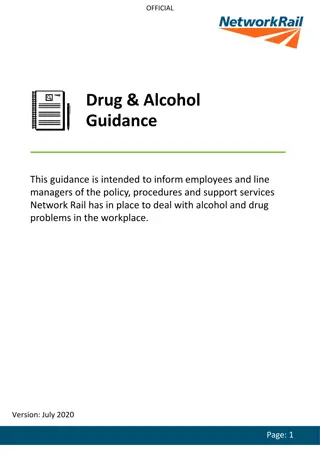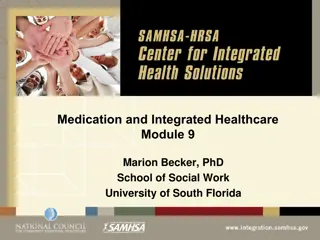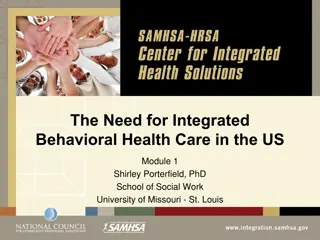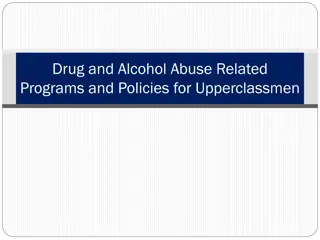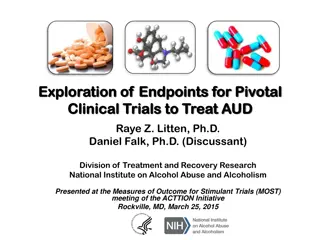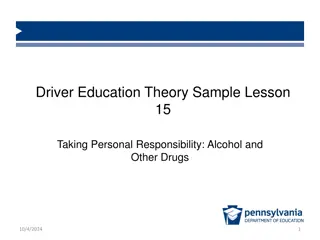Developing a Framework for Integrated Care in Drug and Alcohol and Mental Health Clinical Services
Exploring the challenges and strategies in developing and testing a framework to improve integrated care in drug and alcohol and mental health clinical services. The journey involves bridging gaps between research and practice, identifying key issues in implementing integrated care, and co-designing a flexible model for service delivery. Through literature reviews and systematic reviews, the aim is to create a standardized yet adaptable framework to support the transition to integrated care.
Download Presentation

Please find below an Image/Link to download the presentation.
The content on the website is provided AS IS for your information and personal use only. It may not be sold, licensed, or shared on other websites without obtaining consent from the author.If you encounter any issues during the download, it is possible that the publisher has removed the file from their server.
You are allowed to download the files provided on this website for personal or commercial use, subject to the condition that they are used lawfully. All files are the property of their respective owners.
The content on the website is provided AS IS for your information and personal use only. It may not be sold, licensed, or shared on other websites without obtaining consent from the author.
E N D
Presentation Transcript
It seems so simple until it isn t The development and testing of a framework to increase the uptake of integrated care into routine service delivery in drug and alcohol and mental health clinical services. Catherine Foley
Interface between research and clinical services Importance of integrating learning and clinical practice Our question: can you provide AOD treatment in MH? Good evaluation design and data are critical (e.g. use of embedded and valid tools like ATOP) Our approach: engage researchers to help think through evaluation design; what to measure; what we already know. 2
Background What do we know? MH and AOD are prevalent, difficult to treat, and associated with high healthcare costs. Clinical guidelines advocate integrated care (IC) IC is not routinely implemented or sustained. Why is IC not widely provided as routine care? Two hypotheses: 1. Lack of a standardised model that can easily be translated into practice across multiple settings. 2. Lack of guidance about how to transition from independent to integrated care and successfully implement and sustain an IC model. 3
Method Examining hypothesis 1: Review of literature reviews. Several models: not generalisable, not comparable (Deady et.al., 2015) Confirmed 1st hypothesis: no standardised model being translated into practice in multiple settings. Aim 1 for my research: Develop a model that is standardised based on evidence and also able to be tailored to individual services. 4
Method Examining hypothesis 2: Prisma compliant systematic review From 452 studies to 48 with process/implementation. 0 that adequately evaluated or described the process. Confirmed 2nd hypothesis: lack of an adequate process to guide MH and AOD services through the complex transition from independent care to IC. Aim 2 for my research: Develop a pragmatic framework to guide services through the process of implementing a model of IC. 5
Co-designing a model and a framework 1. Best-evidence practice (Sackett et.al., 1996). Best available evidence + views of service providers and consumers Methodology (PAR): empowers participants to drive practice change; action occurs as research progresses. 2. Standardised but flexible (Shakeshaft/ Munro/ Snijder/ Knight, 2017-18) Core components (CCs) based on research evidence. Flexible activities to operationalise the CCs that can be chosen and devised by staff. 6
The service delivery model Core components Flexible activities Consultation with AOD CNC at referral, pairing of workers from care planning onward 1. No wrong door** - Regular scheduled meetings; share stories. - Structured cross-sector support/ supervision. - Agreed KPIs for: meetings, co-developed /co- facilitated activities, clinical support, collab. care plans. Partnership monitoring (CAC). Agreed schedule of measures in EMR. Improved screening by referrers. 2. Collaborative service relationships* 3. Brief screening at all points** Comprehensive assessment where relevant 4. Best-evidence therapies My Choice groups. Review and agree on therapeutic activities. My Choice: routine review weekly, six weekly. Co-designed feedback mechanism. 5. Systematic feedback from staff, clients and carers** 6. Post treatment care** 7. Formal links to researchers* Agreed discharge plan; appropriate follow-up Established a research advisory group. Trial conjoint position. 7
Logic for the service delivery model d) Meaures a) Goals b) SD CC 1 c) Mechanism of change Process Outcome FA X 1.Improve client and staff engagement and empowerment 2.Optimise # of clients receiving IC 3.Optimise client experience, outcomes 4.Minimise silo perceptions 5.Reduce service gaps 6.Reduce treatment duplication All clients have access to IC irrespective of point of entry Uptake # screened # identified # treated # meetings # staff in supervision Clients PROMs Sufficient time to build genuine professional relationships fosters shared responsibility, care continuity, staff confidence and satisfaction 2 X Wellbeing HoNOS AoD ATOP Early identification & monitoring improves care planning and outcomes 3 X Client views PREMs MH Recovery Star Approp. tx distilled through rigorous evaluation is most likely to achieve desired outcomes for majority clients 4 X Staff views CCQ Participation improves tx and upholds clients rights to influence services 5 X Cost Cost-benefit analysis Partnership CAC Assertive follow-up reduces relapse and disengagement 6 X Service DDCAT/ DDCMHT Links to researchers helps to embed evaluation and ensure timely access to new evidence 7 X 8
The implementation framework Core components Flexible activities 1.Form a partnership Step 1: managers. Step 2: senior clinicians. Step 3: frontline staff. Step 4: consumers 1. Form a steering group; develop a RAG; survey staff receptiveness (CCQ). Form an action planning group, develop EOIs for leaders & champions; feedback to managers. Hold info sessions, seek ideas, seek drivers, dedicate a room and time for meetings. Meet with residents; hold community forums. 2. 3. 4. 2. Establish the status quo Task: Decide upon measures, measure baselines Seek support from the RAG; add focus groups for in- depth review of culture; involve staff/consumers in conducting baseline evaluations 3. Develop relationships and a shared vision Task: Establish collaboration/partnership processes Form a working party; adopt PAR; share stories; visit sites; review patient pathway 4. Tailor the service-delivery model Task: Co-design and trial flexible activities Identify opportunities on pathway for collaborative work; develop activities at fortnightly meetings 5. Develop training and clinical supports Task: Identify preferences, sign supervision contracts Info sessions to identify needs; develop co-facilitated activities; peer mentors/supervision 6. Embed sustainability & build confidence Step 1: Develop KPIs and plan for routine evaluation. Step 2: Roll out, monitor, build confidence to deliver. 1. 2. KPIs: monitor uptake/outcomes via evaluation tools KPIs to monitor participation, clinical supervision, peer support, and confidence. 9
Next steps 11
